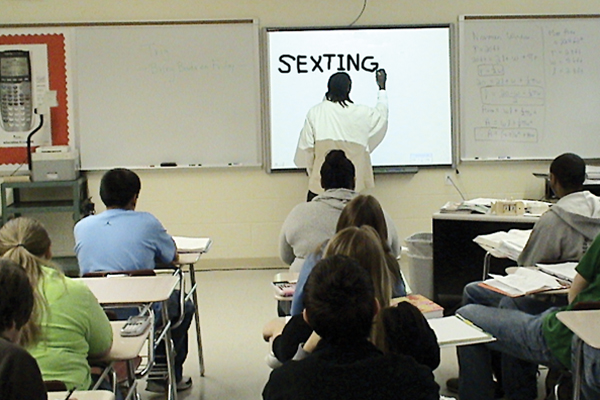New Ontario sex-ed curriculum is a welcome update
Photo: Jaye Yohe, CC. Edits: Marta Kierkus.
The new Ontario sex-ed curriculum is a great step forward. The curriculum hadn’t been modified since 1998, and it was desperately in need of an update.
This is especially true considering that kids are maturing at a faster rate these days. Some have even started to exhibit signs of puberty at age six, a fact that’s been attributed to environmental factors such as the decrease of widespread disease and better nutrition. Since we can’t stop this from occurring, the only thing we can do to prepare these children for early-onset puberty is by introducing topics like gender identity and puberty to them at an earlier age. That way, we can avoid situations where these developing young people are terrified of their own changing bodies.
I have a friend who experienced her first menstrual cycle during the summer of grade four. She was playing with friends and noticed that her underwear felt wet. After going home to use the washroom she saw that her underwear was filled with blood. She started to panic, thinking she had cut herself. Terrified of telling her mother, she stuffed toilet paper in her underwear thinking it would soak up the blood.
The following school semester, my friend carried this secret with her. She felt embarrassed every time she had her period, thinking that it was only happening to her.
This is not an uncommon story. Embarrassing puberty anecdotes seem funny in retrospect, but they can be traumatizing at the time. What seems like unusually early puberty is extremely stressful for a nine-year-old girl. This new sex-ed curriculum focuses a lot on body positivity and puberty as early as grade four, which means that generations of Canadian girls won’t have to go through the same experience my friend did.
Additionally, the early introduction of concepts like gender identity, same-sex relations, and consent is also a necessity for helping children of this generation get a grip on healthy physical intimacy. Today, the Internet is easily accessible to most children, which means they are often given free rein to explore endless, context-free sexual images, something that may hamper their understanding of healthy sexual development.
For example, being exposed to pornographic material as a first sexual experience is problematic, since children don’t realize that porn is simulated and that sex is a very personal experience. These children grow up to be sexually active teenagers and adults, and the way they experience sex for the first time is clouded by the images and content found in this pornographic material.
We can’t stop kids from going on the Internet and accessing these sites. It’s inevitable. But what we can do is give them a thorough understanding of sexual health, sexual awareness, and sexual acceptance by educating them as early as possible.
While teachers and children themselves might consider these topics to be awkward and uncomfortable to discuss in class, it doesn’t really matter. As long as a new generation of kids are taught not to freak out about their developing bodies, it’ll all be worth it in the end.





